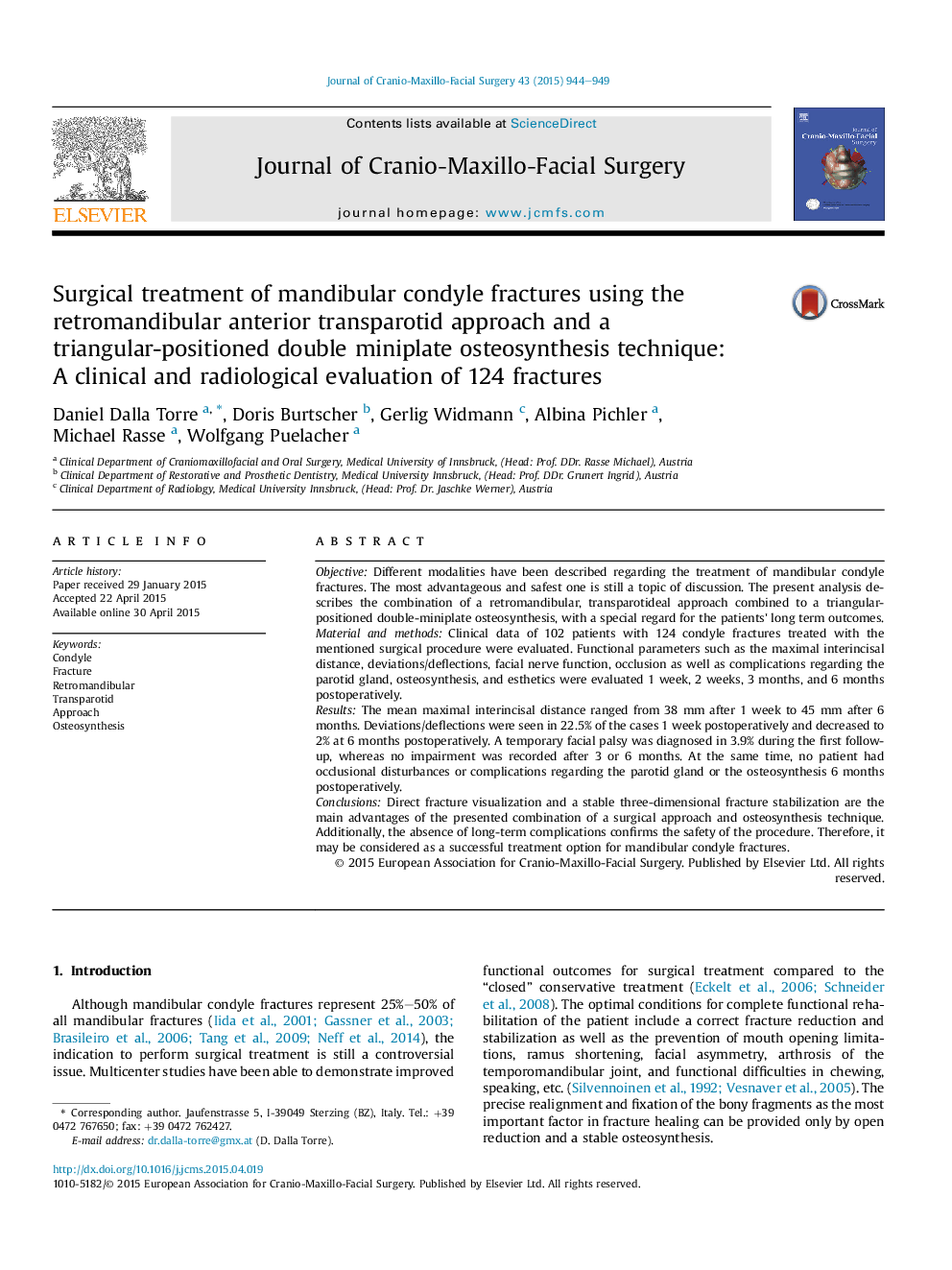| Article ID | Journal | Published Year | Pages | File Type |
|---|---|---|---|---|
| 3142317 | Journal of Cranio-Maxillofacial Surgery | 2015 | 6 Pages |
ObjectiveDifferent modalities have been described regarding the treatment of mandibular condyle fractures. The most advantageous and safest one is still a topic of discussion. The present analysis describes the combination of a retromandibular, transparotideal approach combined to a triangular-positioned double-miniplate osteosynthesis, with a special regard for the patients' long term outcomes.Material and methodsClinical data of 102 patients with 124 condyle fractures treated with the mentioned surgical procedure were evaluated. Functional parameters such as the maximal interincisal distance, deviations/deflections, facial nerve function, occlusion as well as complications regarding the parotid gland, osteosynthesis, and esthetics were evaluated 1 week, 2 weeks, 3 months, and 6 months postoperatively.ResultsThe mean maximal interincisal distance ranged from 38 mm after 1 week to 45 mm after 6 months. Deviations/deflections were seen in 22.5% of the cases 1 week postoperatively and decreased to 2% at 6 months postoperatively. A temporary facial palsy was diagnosed in 3.9% during the first follow-up, whereas no impairment was recorded after 3 or 6 months. At the same time, no patient had occlusional disturbances or complications regarding the parotid gland or the osteosynthesis 6 months postoperatively.ConclusionsDirect fracture visualization and a stable three-dimensional fracture stabilization are the main advantages of the presented combination of a surgical approach and osteosynthesis technique. Additionally, the absence of long-term complications confirms the safety of the procedure. Therefore, it may be considered as a successful treatment option for mandibular condyle fractures.
